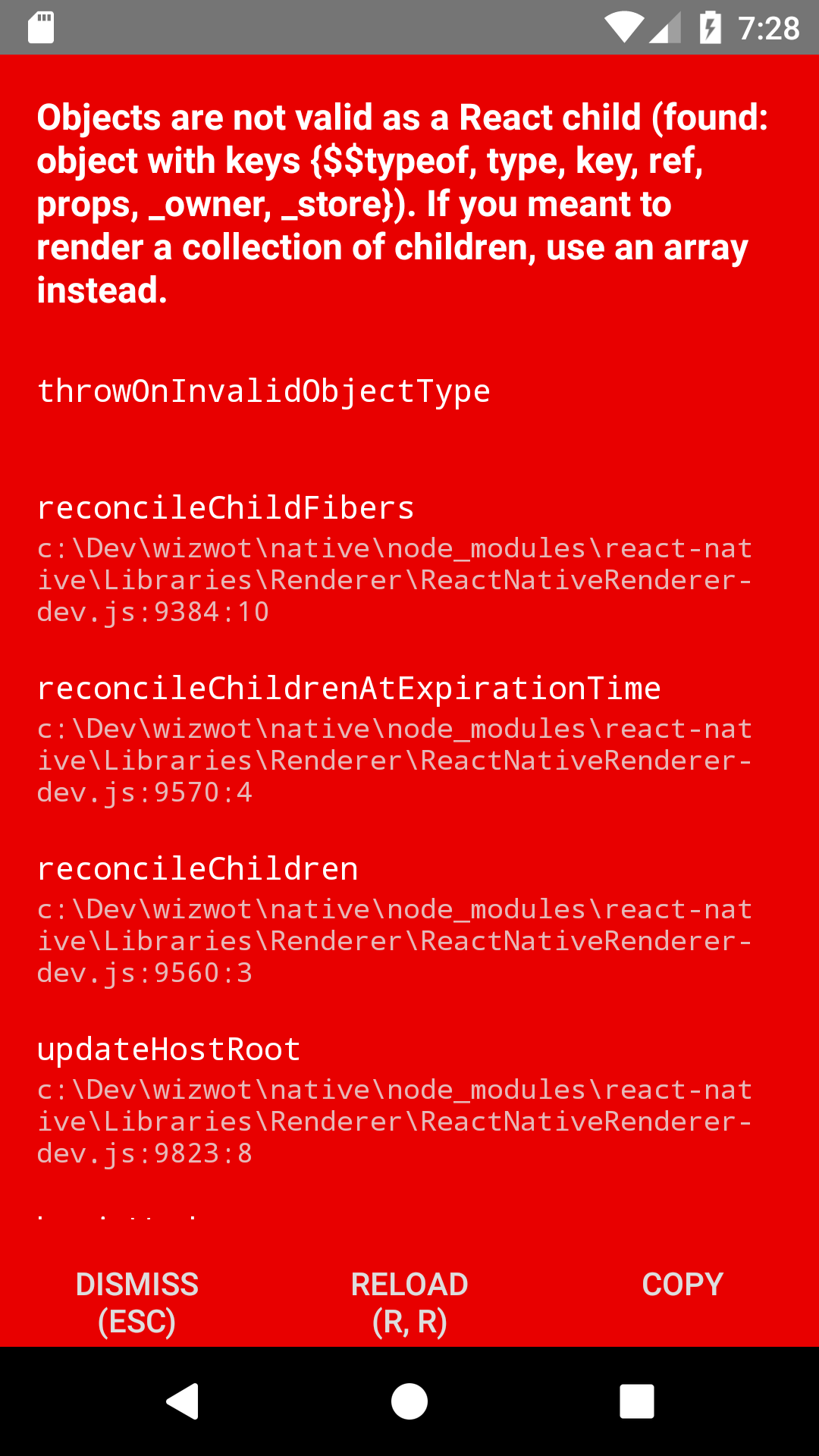React-Native WebView RPC
RN-WebView-RPC's goal is to allow calls to native API from a web
application that runs inside a WebView component, and vice versa.
It can be used as a bridge between the native and the web
parts of hybrid apps, for example,
requesting native geo-location permissions from withing a WebView.
RN-WebView-RPC integrates React-Native's WebView component together with Google's Comlink library into an easy-to-use package.
For example, the snippet below allows opening a native alert that lets the user to choose the background color of an html web page.
// App.js ;;;; Component { return <View style= flex: 1 > <WebViewRpc style= marginTop: 0 flex: 1 source=html exposedObj= Alert injectScriptTag /> </View> ; }// index.html const proxy = rnRpc;await proxyAlert; { documentbodystylebackgroundColor = color;}Installation
React-Native End Installation
First, install the react-native-webview peer dependency, by following the
instruction here.
For most projects, that would be:
$ npm install --save react-native-webview$ react-native link react-native-webviewThen, install rn-webview-rpc from NPM:
$ npm install --save rn-webview-rpcFinally, in your code, import the WebViewRpc component:
;Note: If you encounter this error:
Objects are not valid as a React child...

then you should try adding the following imports
;;at the top of your app's JavaScript entry point. See this thread for more info.
Web End Installation
You can either install from NPM or from a CDN.
Install from NPM
Install rn-webview-rpc from NPM (exactly as for the React-Native project):
$ npm install --save rn-webview-rpcThen, in your code, import the rnRpc object:
;Install from a CDN
Install from a CDN automatically
Let the React-Native's WebViewRpc inject an HTML script tag to the website,
by setting the injectScriptTag prop to true:
<WebViewRpc ... injectScriptTag/>Install from a CDN manually
Add a script tag to your HTML's head:
Either way (after a manual or automatic installation) the rnRpc object
becomes available globally.
Warning:
When manually installing rn-webview-rpc on the web end
(either from NPM or CDN), it's your responsibility to make sure that
both ends (React-Native and web) use compatible versions
of rn-webview-rpc.
However, when installing automatically from a CDN by using the injectScriptTag,
this burden is inherently taken care of for you.
React-Native API - The WebViewRpc component
A React-Native component that renders a
WebView
component with a bi-directional RPC bridge.
Props
The following props are consumed by the rn-webview-rpc component.
Additional props are forwarded to the react-native-webview's
WebView component.
exposedObj
The React-Native object to be exposed to the web end.
- Type: object
- Default:
{}
injectScriptTag
Controls whether to inject a script tag to automatically
load the rn-webview-rpc module to the website.
- Type: bool
- Default:
false
onMessage(listener)
Allows an extra custom listener to message events
(except for the one that is already configured in order to take care of the
RPC functionality).
- Type: function
- Default:
undefined
In most cases, this prop should not be used.
target
An interface object for proxy calls.
It is required for invoking calls from the React-Native end to the web end
(using the rnRpc's proxy attribute).
- Type: object
- Default:
{}
Methods and Attributes
Hint: A React class component instance is accessible using the ref prop,
for example:
<WebViewRpc ref= { thiswebViewRpc = ref; }/>proxy
An ES6 proxy polyfill that sends all operations performed on it
to the web side. It is essentially a proxy object returned by
Comlink's proxy function.
However, due to limitations of the proxy polyfill
(with respect to the ES6 proxy), it is limited to the interface defined
beforehand by the target prop. This limitation will be resolved once
React-Native updates its JavaScript engine to a modern one,
probably in React-Native@0.60.
webView
A reference to the native WebView component instance.
Static Class Methods
proxyValue(value)
A wrapper function to let a parameter or a return value
be proxied rather than copied.
This is just a reference to
Comlink's proxyValue function.
Web API - rnRpc
An object at the web end that provides a bi-directional RPC bridge to the native end.
Functions
proxy(target)
Creates an ES6 proxy that sends all operations performed on it
to the native side.
proxy() returns an ES6 proxy object, exactly like
Comlink's proxy function.
In older browsers the proxy polyfill is used instead of the ES6 proxy.
In that case, the target argument should define the interface object
for proxy calls.
proxyValue
A wrapper function to let a parameter or a return value
be proxied rather than copied.
This is just a reference to
Comlink's proxyValue function.
expose(obj)
Exposes an object to the native end.
It just wraps
Comlink's expose function.
Limitations
Exposing an object in the native side requires providing a
target interface at creation time.
This is because the JavaScript engine
JavaScriptCore
used by React-Native does not support the ES6 proxy object,
and its polyfill
proxy-polyfill
is limited.
Same applies for the web end for old browsers.
Example
See the example directory.

Under the Hood
Reading this section is most definitely optionally :)
The major pain coding this package was helping the delightful Comlink library to work in the native environment (and old browsers). Comlink is designed for web workers environment, and unfortunately the native JavaScript engine is more limited.
-
WebView's messaging interface supports only string messages. Thankfully, solving this issue was easy, since the Comlink library already includes aMessageChannelAdapter, to support string based message channels, such as WebRTC. What remained to be done is to translate thepostMessage/onMessageWebView's message API to asend/addEventListenerendpoint. -
The ES6
proxyobject is unsupported natively. This was solved using the Proxy Polyfill (with some limitations). Moreover, to allowproxyto work in React-Native, a few changes were required in Comlink. -
The
MessageChannelandMessagePortobjects are missing in the native environment. Since no polyfills are available, to address this problem I had to write pretty simple degenerated polyfills. -
More polyfills: The
ObjectandArrayBufferbehave slightly inconsistently in different environments. Hence, I have them overridden by polyfills when necessary.
